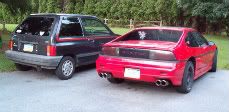auto's had different front rotors
woot, i own this page
woot, i own this page




 It's a good thing you don't read the stickies, you might of learned something.
It's a good thing you don't read the stickies, you might of learned something. Poverty produces creativity
Poverty produces creativity pedal feel for the first bit of travel then ramps up to real firm feedback close to the end of travel.
pedal feel for the first bit of travel then ramps up to real firm feedback close to the end of travel.
 It's a good thing you don't read the stickies, you might of learned something.
It's a good thing you don't read the stickies, you might of learned something. Poverty produces creativity
Poverty produces creativity
Comment